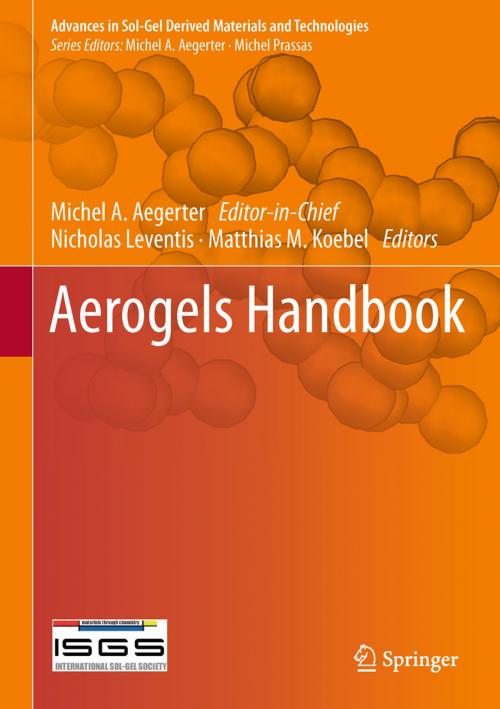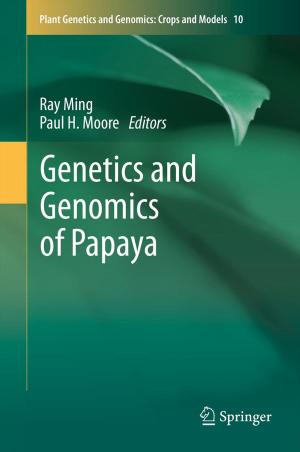Aerogels Handbook
Nonfiction, Science & Nature, Science, Chemistry, Inorganic, Technology, Material Science| Author: | ISBN: | 9781441975898 | |
| Publisher: | Springer New York | Publication: | June 10, 2011 |
| Imprint: | Springer | Language: | English |
| Author: | |
| ISBN: | 9781441975898 |
| Publisher: | Springer New York |
| Publication: | June 10, 2011 |
| Imprint: | Springer |
| Language: | English |
Aerogels are the lightest solids known. Up to 1000 times lighter than glass and with a density as low as only four times that of air, they show very high thermal, electrical and acoustic insulation values and hold many entries in Guinness World Records. Originally based on silica, R&D efforts have extended this class of materials to non-silicate inorganic oxides, natural and synthetic organic polymers, carbon, metal and ceramic materials, etc. Composite systems involving polymer-crosslinked aerogels and interpenetrating hybrid networks have been developed and exhibit remarkable mechanical strength and flexibility. Even more exotic aerogels based on clays, chalcogenides, phosphides, quantum dots, and biopolymers such as chitosan are opening new applications for the construction, transportation, energy, defense and healthcare industries. Applications in electronics, chemistry, mechanics, engineering, energy production and storage, sensors, medicine, nanotechnology, military and aerospace, oil and gas recovery, thermal insulation and household uses are being developed with an estimated annual market growth rate of around 70% until 2015. The Aerogels Handbook summarizes state-of-the-art developments and processing of inorganic, organic, and composite aerogels, including the most important methods of synthesis, characterization as well as their typical applications and their possible market impact. Readers will find an exhaustive overview of all aerogel materials known today, their fabrication, upscaling aspects, physical and chemical properties, and most recent advances towards applications and commercial products, some of which are commercially available today. Key Features: •Edited and written by recognized worldwide leaders in the field •Appeals to a broad audience of materials scientists, chemists, and engineers in academic research and industrial R&D •Covers inorganic, organic, and composite aerogels •Describes military, aerospace, building industry, household, environmental, energy, and biomedical applications among others
Aerogels are the lightest solids known. Up to 1000 times lighter than glass and with a density as low as only four times that of air, they show very high thermal, electrical and acoustic insulation values and hold many entries in Guinness World Records. Originally based on silica, R&D efforts have extended this class of materials to non-silicate inorganic oxides, natural and synthetic organic polymers, carbon, metal and ceramic materials, etc. Composite systems involving polymer-crosslinked aerogels and interpenetrating hybrid networks have been developed and exhibit remarkable mechanical strength and flexibility. Even more exotic aerogels based on clays, chalcogenides, phosphides, quantum dots, and biopolymers such as chitosan are opening new applications for the construction, transportation, energy, defense and healthcare industries. Applications in electronics, chemistry, mechanics, engineering, energy production and storage, sensors, medicine, nanotechnology, military and aerospace, oil and gas recovery, thermal insulation and household uses are being developed with an estimated annual market growth rate of around 70% until 2015. The Aerogels Handbook summarizes state-of-the-art developments and processing of inorganic, organic, and composite aerogels, including the most important methods of synthesis, characterization as well as their typical applications and their possible market impact. Readers will find an exhaustive overview of all aerogel materials known today, their fabrication, upscaling aspects, physical and chemical properties, and most recent advances towards applications and commercial products, some of which are commercially available today. Key Features: •Edited and written by recognized worldwide leaders in the field •Appeals to a broad audience of materials scientists, chemists, and engineers in academic research and industrial R&D •Covers inorganic, organic, and composite aerogels •Describes military, aerospace, building industry, household, environmental, energy, and biomedical applications among others















